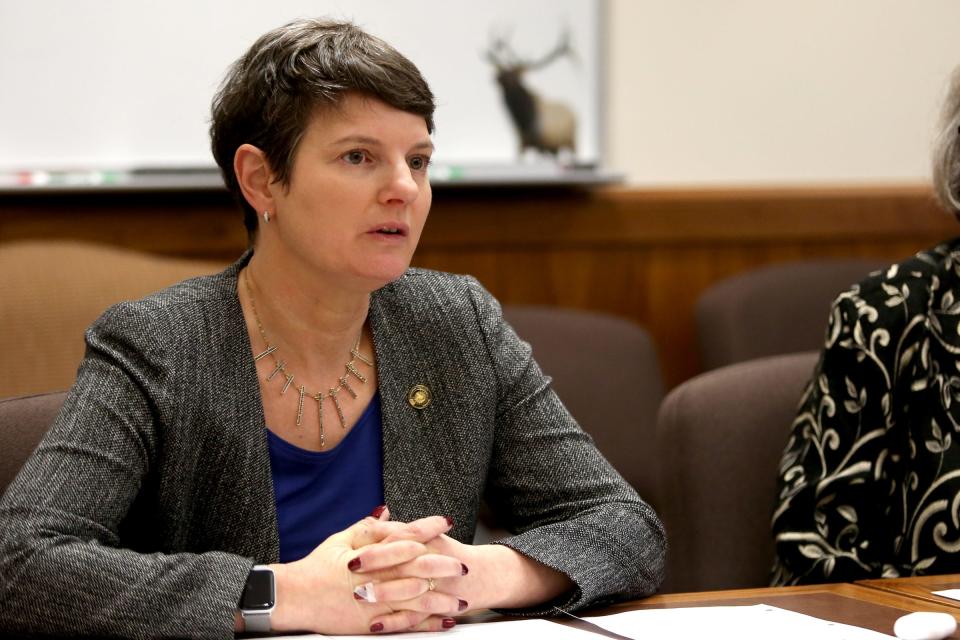Oregon gears up to become the third state to establish a Basic Health Plan

A new health insurance option is on the horizon for low-income Oregonians who may lose Oregon Health Plan coverage as the pandemic-initiated federal public health emergency ends on May 11.
Since March 2020, federal funds have supported Medicaid continuous enrollment, which allowed individuals to remain on Medicaid without engaging in a reenrollment process and despite their changing eligibility.
Oregon has seen an increase in overall health care coverage and a decrease in coverage inequities during that time. Oregon Health Plan enrollment increased to nearly one in three Oregonians. In 2021, the rate of uninsured Black Oregonians decreased from 8.2% to 5%, according to the Oregon Health Authority.
To ensure Oregonians have continued health care access, the state plans to establish a Basic Health Plan for those set to lose Oregon Health Plan coverage.
Continuous enrollment for Oregon Health Plan ended March 31. Throughout April, Oregon will start the process of redetermining eligibility.
People no longer enrolled or eligible for Medicaid will be transferred to the Bridge Health Care Program, an interim health insurance option until the Basic Health Plan becomes available. The Bridge Health Care Plan will serve as a temporary coverage option for those with a combined family income between 138% to 200% of the federal poverty level.
What is the Basic Health Plan?
Section 1331 of the federal Affordable Care Act allows states to establish a federally funded Basic Health Plan.
So far, only Minnesota and New York have established a plan. Oregon is set to be the third state.
Basic Health Plan benefits will align with Oregon Health Plan benefits, having no or low premiums and no cost-sharing.
People often lose Medicaid coverage as they experience income fluctuations above and below Medicaid eligibility requirements or get stuck in the disenroll and reenrollment process.
Establishing a basic health plan would provide more consistent coverage, which is critical for advancing health equity in Oregon, said Sen. Elizabeth Steiner, D-NW Portland and Beaverton, who co-chairs the Joint Task Force on the Bridge Health Care Program.
“I came to the Legislature to help make Oregon the healthiest state in the nation, and one of the ways we do that is to make sure Oregonians have access to high quality, affordable, evidence-based health care,” said Steiner.

Who would be eligible for Oregon's Basic Health Plan?
Those with an individual or combined family income between 138% to 200% of the federal poverty level will be eligible for Basic Health Plan benefits.
For a four-person household, 138% of the federal poverty level is a yearly income of $38,295, and 200% is a yearly income of $55,500. To qualify for the Basic Health Plan, a four-person family would need to have a combined income from $38,295 to $55,500.
People within the 138% to 200% range are most likely to experience fluctuations in Medicaid eligibility, said Steiner, and may not have access to quality health insurance or may lose coverage altogether.
“I’ve seen first-hand the damage that’s caused by loss of continuity of care,” said Steiner, a medical doctor who teaches at Oregon Health and Sciences University.
When will the Basic Health Plan be available to Oregonians?
The Basic Health Plan is expected to become available in July 2024.
Until then, the state is implementing the Bridge Health Care Program, to help maintain coverage for individuals who are ineligible for Oregon Health Plan after the federal public health emergency funding ends this spring.
This redetermination process started April 1 using funding allocated by HB 4035, which was passed during the 2022 regular session. Federal funding will help pay the remainder of medical and administrative costs for the Bridge Health Care Program.
Oregonians whose coverage is transferred to the Bridge Health Care Program will remain within their current Coordinated Care Organization (CCO) network.
How do Oregonians maintain enrollment?
The Oregon Health Authority will notify Oregon Health Plan members on the status of their eligibility beginning mid-April through the next 10 months.
Members should make sure their address is up to date and respond to any notices by following the provided instructions.
The quickest way to update information is by going to benefits.oregon.gov and logging into the member ONE account.
Individuals no longer eligible for Oregon Health Plan benefits will be given 60 days notice prior to their benefits ending. A second notice will be given 30 days prior.
Children can remain on Medicaid coverage until age six and all other individuals currently covered by the Oregon Health Plan can maintain coverage for up to two consecutive years regardless of income changes and without having to reapply. So individuals who were eligible in March 2022 have one more year of coverage, until March 2024, without reapplying.
Members with questions about the renewal process can call the ONE Customer Service Center at 1-800-699-9075.
Sydney Wyatt covers healthcare inequities in the Mid-Willamette Valley for the Statesman Journal. Send comments, questions, and tips to her at SWyatt@gannett.com, (503) 399-6613, or on Twitter @sydney_elise44
The Statesman Journal’s coverage of healthcare inequities is funded in part by the M.J. Murdock Charitable Trust, which seeks to strengthen the cultural, social, educational, and spiritual base of the Pacific Northwest through capacity-building investments in the nonprofit sector.
This article originally appeared on Salem Statesman Journal: New health insurance on horizon for low-income Oregonians

